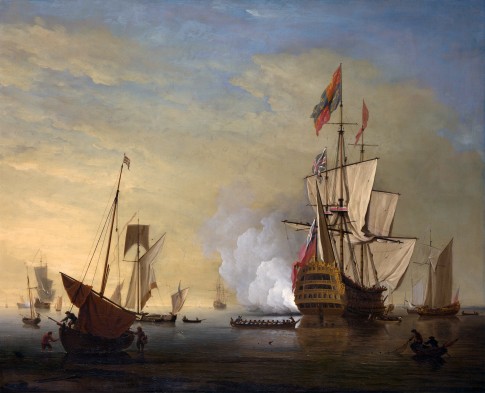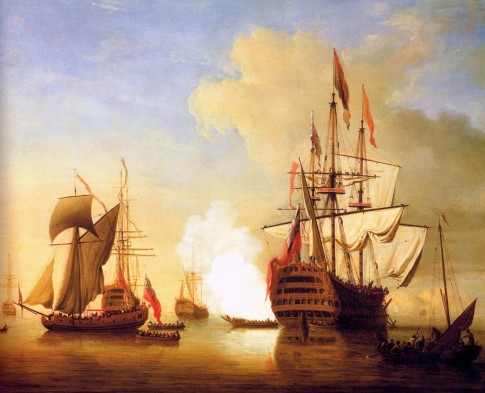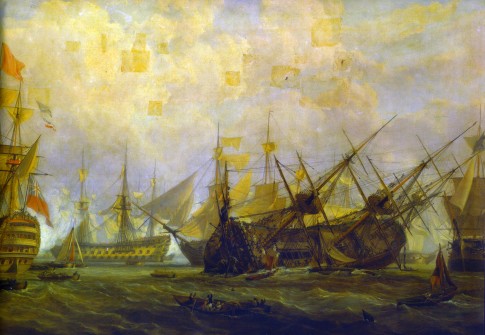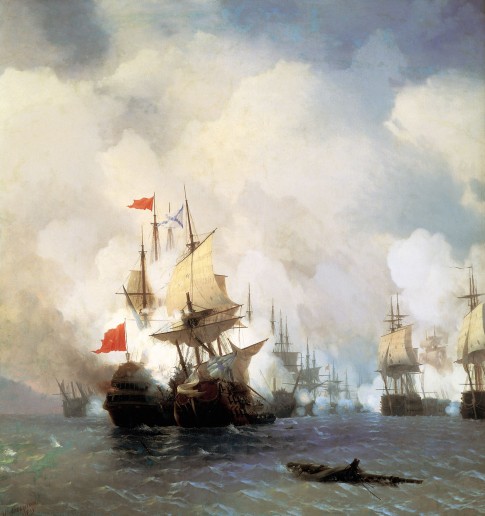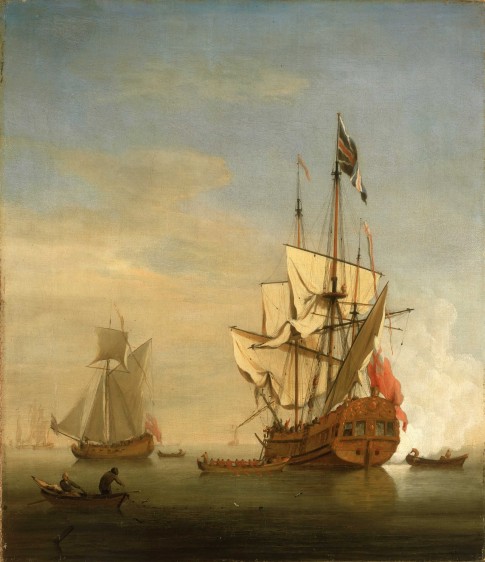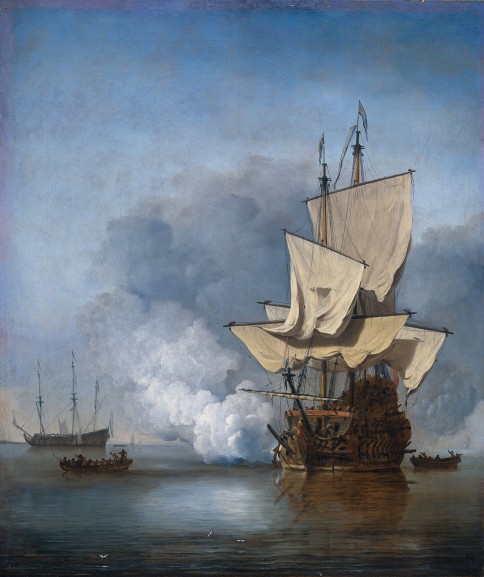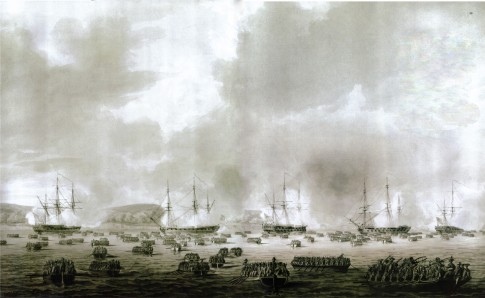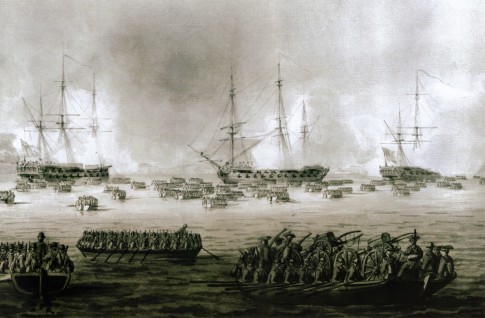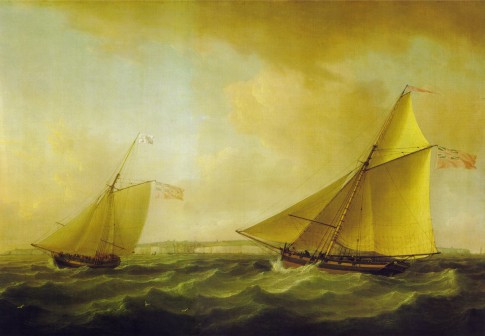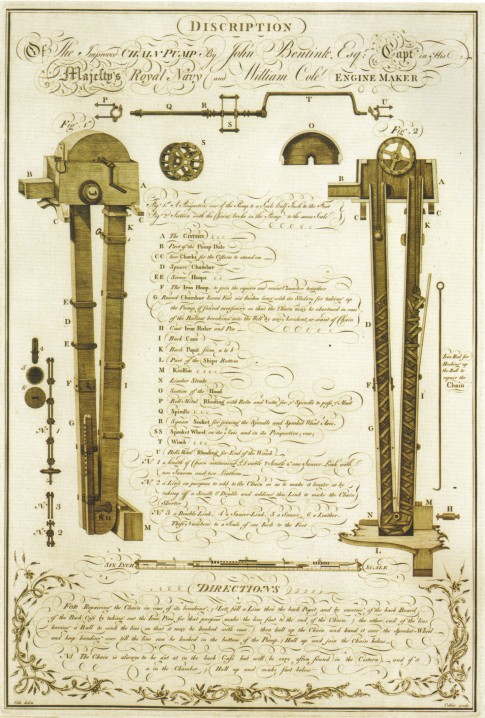The hostilities of the Seven Years War were ended in 1763 by the Treaty of Paris. This involved a complex series of land exchanges but it was quite clear that Britain had won an astounding victory through her successful use of sea power: Canada and India were now British colonies. Much had been learned by both sides during the war about the difficulties of maintaining and operating fleets of fighting ships and, crucially, about the defense of the British Isles from invasion. By 1763 invasion was a significant part of French strategy for almost 20 years. Although the English Channel is at its narrowest point only 21 miles wide, significant logistical factors worked against the French. To start with, there were no major French ports anywhere along the Channel. The nearest port that could hold an invasion fleet and the necessary warships to protect it was at Brest, facing the Atlantic on the western coast of Brittany. To launch an invasion across the Channel, the cumbersome and unarmed invasion craft would either have to make the journey alone, unprotected from strong British forces awaiting them on sea and land, or would have to wait for fleet of warships to escort them across. It was, however, exceptionally dangerous for a fleet of French warships to enter the Channel. Not only there were no French ports safe from the weather or from English attack, but escape from the Channel back towards Brest could not be guaranteed in the face of prevailing westerly winds.
For that reason a British squadron watching the Western Approaches to the Channel could protect Britain from invasion and, in the same time, both protect her own trade and attack that of the French. Thus was born the Western Squadron which was to prove highly effective in maintaining a permanent and close blockade of the French coast. The relentlessness of that blockade was made possible by significant administrative and logistical developments; not least the revictualling of the fleet at sea which allowed ships to stay on station, with healthy crews, indefinitely. This close blockade of the French ports not only countered the invasion threat but also squeezed the life out of the French navy and of the entire French war effort. Sailors were denied sea time; the port was denied stores; and the French war machine in turn was denied money as the private financiers who kept the French economy afloat were crippled by British success against French trade.
Maintaining the blockade forged a generation of officers and men who had learned their trade in the unforgiving conditions of the Bay of Biscay and in the harsh reality of combat. Moreover, the execution of Admiral Byng for failing to do his duty at the Battle of Minorca in 1756 strengthened the professional resolve of naval officers so that, at the Battle of Quiberon Bay in 1759, Hawke was able to demonstrate what was possible if healthy, dedicated and skilled sailors were well led.
Great technological breakthroughs had also been made. Of these the most significant was the emergence of the 74-gun ship as the backbone of every nation’s fleet. The 74 was large enough and had a significant weight of broadside to lie in the line of the battle alongside 100-gun ships of three decks, but she was also quick and maneuverable; a perfect compromise between the handiness of a frigate and the strength of a line of battle ship. Little progress was made regarding fleet tactics, however. Quiberon Bay had been a resounding success but the battle had been a chaotic melee, fought in a chase, and the French had not expected or desired battle. A number of actions had been fought in India in which both fleets had sought battle, but they again had proved indecisive affairs with both fleets fighting in parallel line ahead. The line of battle, like trench warfare, was far stronger in defense than attack and as yet no fleet was prepared to take the risks necessary to break it.
Source ID: #fghtshpsv2#
continue reading.....
